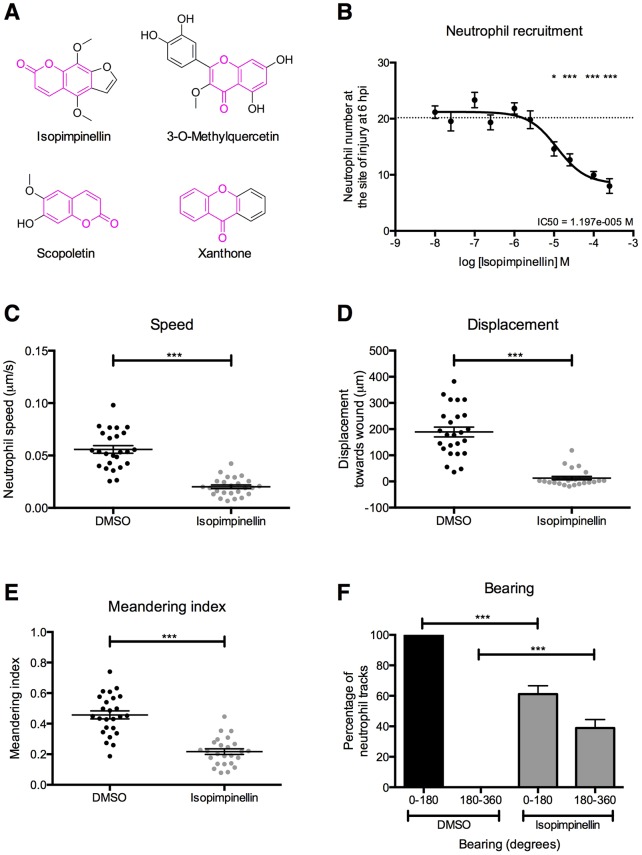Fig. 1.
Isopimpinellin inhibits neutrophil migration towards tissue injury. (A) Isopimpinellin shares structural similarity to three other compounds identified in our previous drug screen for accelerators of inflammation resolution (Robertson et al., 2014). Common benzopyrone structures are highlighted in magenta. (B) Recruitment assay in mpx:GFP larvae treated with varying doses of isopimpinellin immediately post-injury. Isopimpinellin significantly reduces neutrophil numbers at the wound at 6 hpi in a dose-dependent manner (one-way ANOVA with Dunnett's multiple-comparison post-test; *P<0.05, ***P<0.001; n=18, performed as three independent experiments). Dotted line at y=20.17 indicates mean neutrophil number at wound in DMSO control larvae. (C-F) Neutrophil tracking assay in mpx:GFP larvae pretreated with DMSO or 25 μM isopimpinellin for 2 h prior to tail fin-injury and time-lapsed from 1 to 3 hpi. Individual neutrophils were tracked manually to analyse (C) speed, (D) displacement towards the wound and (E) meandering index. All were reduced in isopimpinellin-treated larvae compared to DMSO controls (unpaired t-test; ***P<0.001; n=26, performed as three independent experiments). Data points represent mean of six tracked neutrophils per fish. For bearing (F), angles of 0° to 180° indicate migration towards the wound, whereas 180° to 360° indicate migration away from the wound (one-way ANOVA with Bonferroni's multiple-comparison post-test to compare selected columns; ***P<0.001; n=30, performed as three independent experiments).

